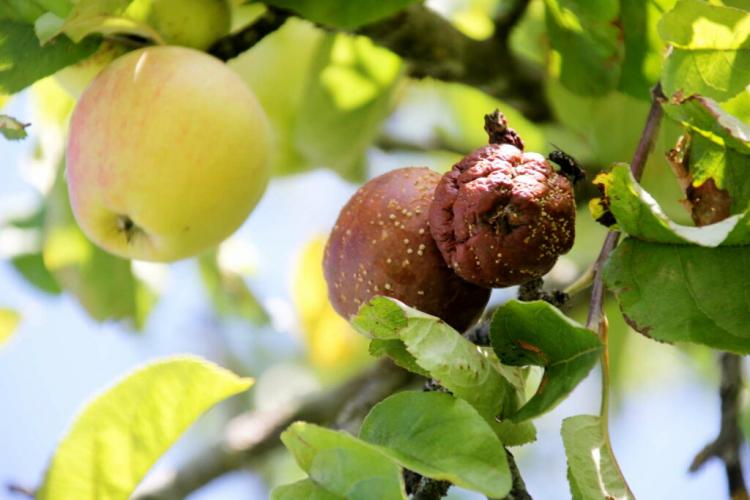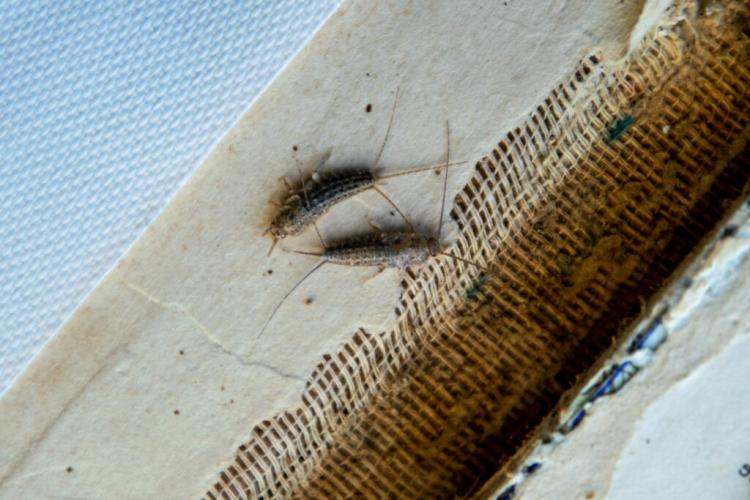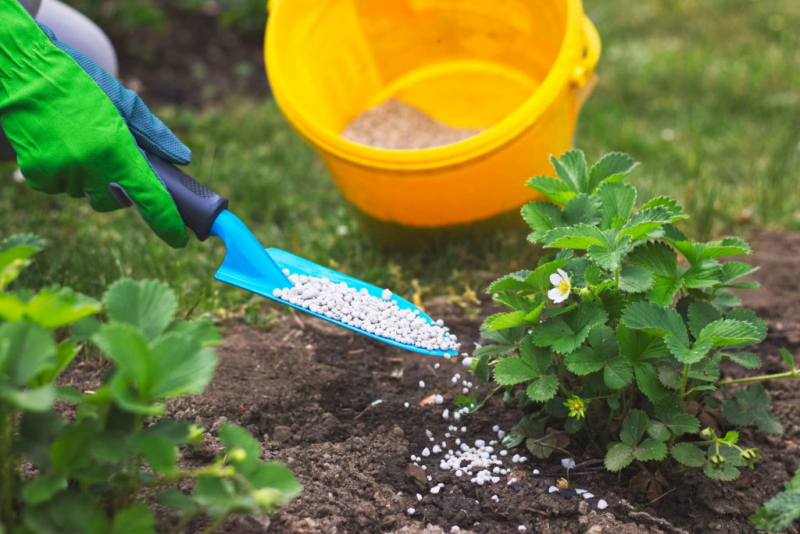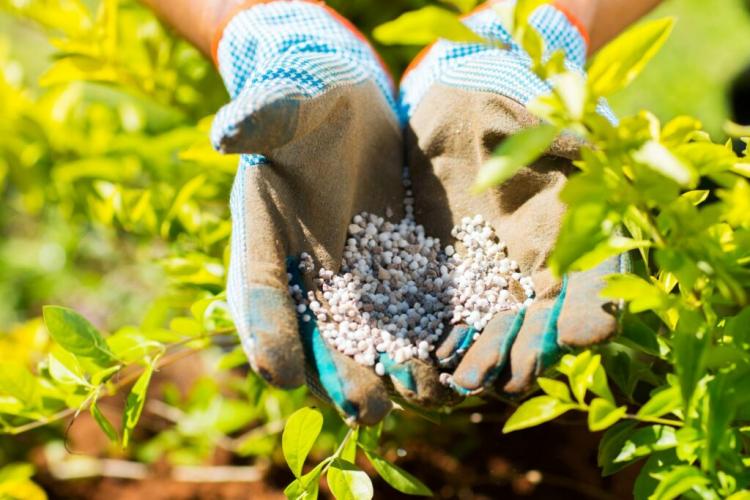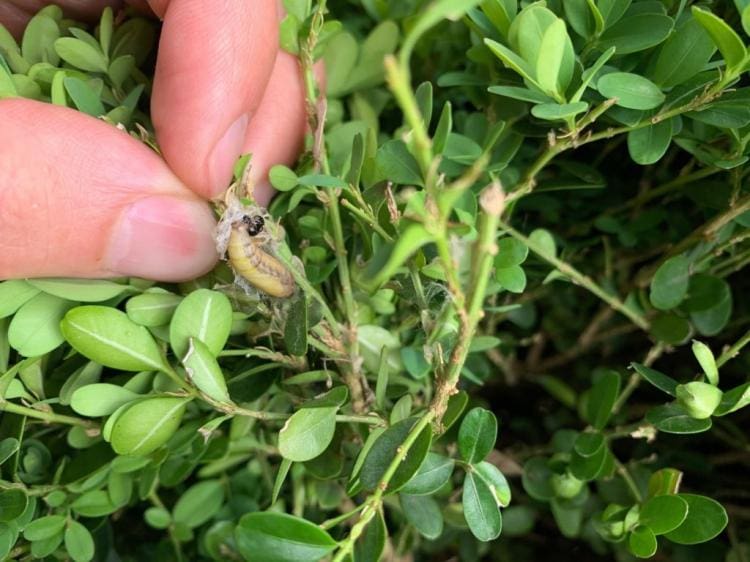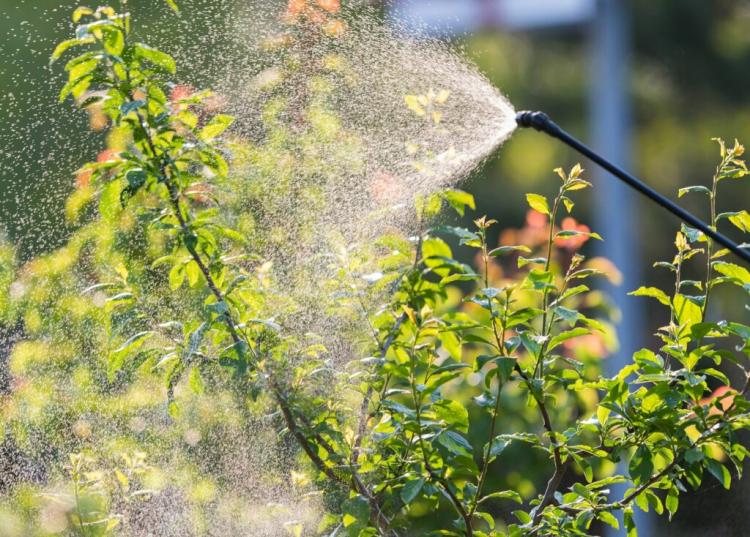Apple Tree Diseases: Common And Dangerous Diseases
Even the beloved apple tree is not spared and can be afflicted by diseases. This is how you can identify important apple tree diseases.
Every plant can be afflicted by dreaded and life-threatening diseases. So the beloved apple tree ( Malus Domestica ) is not spared in your own garden. Under certain circumstances, however, an infestation can be prevented through skillful care measures. However, it cannot always be prevented. However, if you recognize the infestation early on, there may be the possibility that you can protect your apple tree by acting quickly and skilfully. We show how you can counteract an infestation, identify important pests and diseases in good time and what you can do if necessary.
Appletree diseases: factors contributing to increased susceptibility
Table of Contents
The apple tree is in itself easy to care for but is still not spared from all diseases. Various factors increase its susceptibility. A crown that is too dense can, for example, encourage infestation of the tree with harmful insects or fungal pathogens. Dense crowns cannot dry off well, this warm and humid environment practically attracts pathogens. Strong fertilization promotes growth and thus crown density. In addition, the fruit juice of the apple tree is enriched with nutrients. But if you overdo it with fertilizing, insects will also enjoy the rich fruit juices. Metabolic diseases are also promoted by excessive fertilization, such as stippling – a calcium deficiency in the fruit due to excessive nitrogen fertilization.
Find out beforehand from neighbors or the tree nursery you trust whether apple-typical diseases (e.g. apple scab or fire blight) are common in your area. The most effective protection against failure due to such diseases is to choose resistant varieties.
You can protect your apple tree from increased susceptibility to disease by taking the following simple measures:
- Selection of resistant varieties
- Do not fertilize excessively
- Cut and thin the crown regularly
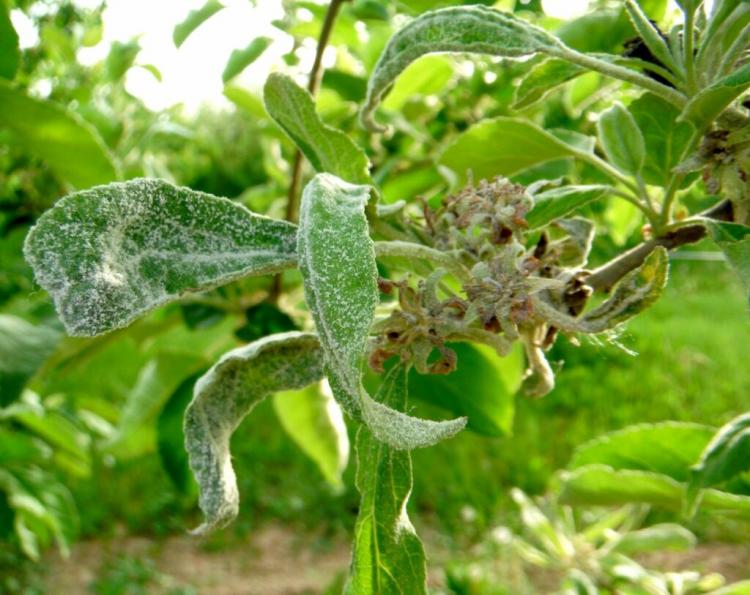
Apple powdery mildew can be avoided with good ventilation
Apple tree diseases: the most common insect pests
Many insects, such as bees, which pollinate the apple tree, or ladybugs, which like to eat aphids, help the apple tree. In addition to the aphids, other insects can damage the tree.
Apple ermine moth
The apple ermine moth ( Yponomeuta malinellus ) is a small white butterfly with black spots. However, it is not the flying moths that are unpleasant for the apple tree, but rather the caterpillars that are about to become moths. In spring, the infestation can be seen through the white webs in the apple tree. The caterpillars of the apple ermine moth hatched the previous summer, but initially live on under a protective layer. As soon as it is permanently above 12 ° C in spring, the caterpillars wake up and satisfy their hunger in the tender buds of the tree and the mines of the young leaves.
You can completely devour your tree, but fortunately, this will not cause permanent damage. The white webs emerge after the caterpillars have shed their skin for the first time. Particularly after a mild winter, it can lead to a severe infestation, as the caterpillars then get through the cold season even better. It is not necessary to fight the apple spider moth, as it does not damage the apple tree in the long term. Even a tree that has been eaten bare is very likely to sprout again in the same year – although no more fruits are to be expected at harvest time.

What can be done against the apple ermine moth?
- Simply remove webs from the tree
- Biological control: wood wasps as natural enemies
- Chemical control: Available from specialist shops; be sure to inform about the application
- Prevention: Female apple web moths cannot fly, a glue ring prevents them from crawling up the trunk
Codling moth
The codling moth (Cydia pomonella ), also known as the fruit maggot, is the most common pest on apple trees. These are brown-gray moths whose caterpillars are only two millimeters long and white or yellowish with a dark head. The infestation can be recognized by the tiny drill holes in the still unripe apple. Infested apples can no longer be stored and often fall off prematurely.
What can you do about the apple wreath?
- Remove infected apples as early as possible
- Pheromone traps followed by spraying with granulose virus or biological control with granulose virus preparations (application three times at an interval of eight days)
- Prevention: Check fruit tree trunks for pupated codling moth larvae in winter and spring and, if necessary, collect larvae
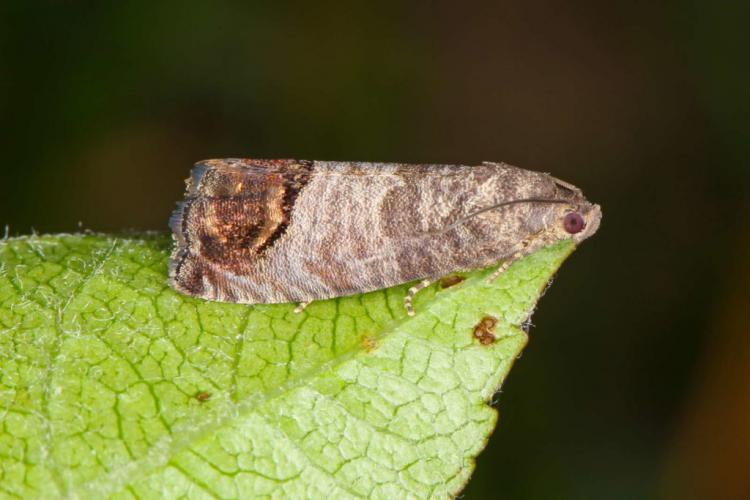
Aphids
Not all aphids are created equal. In particular, the apple grass lice ( Rhapolosiphum insertum ) and various apple lice (Dysaphis spp .) Are targeting the apple tree. An aphid infestation can be recognized by the curls and deformities of the leaves. Due to the increased flow of the sweet sap, aphids are mainly found on younger shoots. Excessive fertilization, which leads to increased budding of shoots with spongy tissue, therefore increases the risk of aphid infestation.
What helps against aphids on the apple tree?
- Promote beneficial insects: Natural enemies are, for example, ladybugs or ear peasants
- If possible, avoid using chemical pesticides in the house and allotment gardens
- Prevention: remove infected branches as part of the summer pruning; Create mixed cultures
Tip: Place upturned clay pots with wood wool in the apple tree – this will attract ear peckers.
Apple Tree Diseases: The Most Common Fungi and Bacteria
In addition to the insects that can bother the apple tree, there are also some fungi and bacteria that harm it. To prevent the pathogen from spreading, particular caution is required here.
Apple scab
You can recognize apple scab ( Venturia inaequalis ) in sensitive varieties as early as spring. It is visible in olive-green to brown spots on the leaves. These dry up from the middle and turn brown. The leaves become wavy or bumpy because the diseased leaf tissue stops growing. The infected foliage falls to the ground prematurely. Apple trees that are particularly heavily infested are therefore almost bare as early as August. The apples also have brown, often torn sores. They are still edible, but less easy to store. Putrefactive fungi can penetrate faster through the cracked shell. Apple scab is favored by a mild and rainy spring.
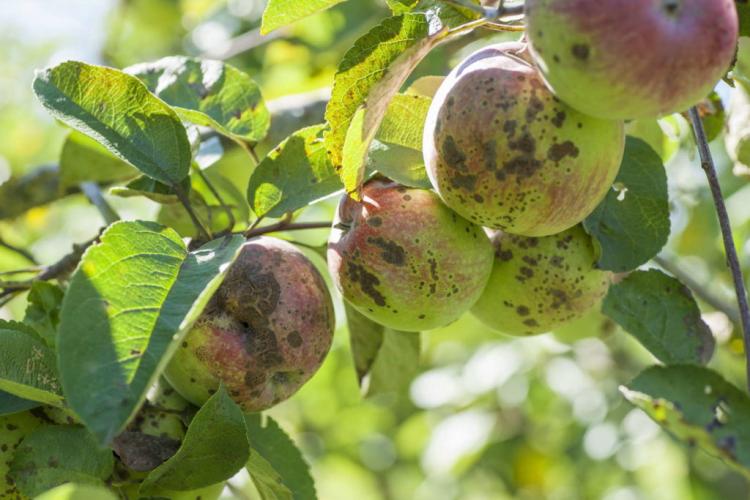
How can you fight apple scab?
- Remove infected leaves immediately
- Spray treatment with approved fungicide (advice from specialist dealers)
- Prevention: removal of leaves in autumn, clearing cuts and an airy location; Silicic acid-containing horsetail broth as a preventive tonic (forms a protective film); Network sulfur preparations
- Scab-resistant varieties
Powdery mildew
Powdery mildew is one of the most well-known diseases affecting apple trees. The fungus spreads at high speed and can sometimes lead to a total failure of the apple harvest. Symptoms of powdery mildew can include a floury coating on the branches, white and floury spots on the leaves, and reticulated cracks in the color of the fruit.
What can you do about powdery mildew?
- Targeted cut to keep crown airy
- Cut out infected areas generously and best burn infected plant material
- in the case of severe infestation, use approved plant protection products after professional advice
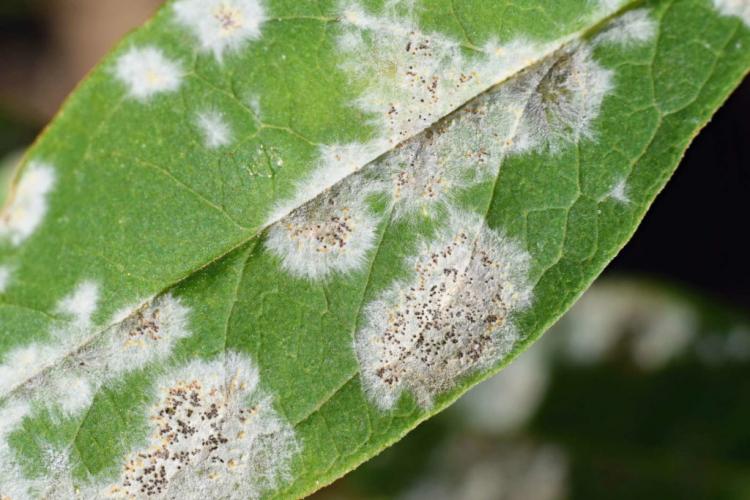
Fire blight
Fire blight is caused by the Erwinia amylovora bacterium. Affected are the flowers and young shoots, which turn dark brown to black and thus look like “burnt”. Sticky bacterial slime can appear on the affected parts of the apple tree. Fire blight can easily be transmitted via insects, but it can also be spread to other plants by humans. Since the course of the disease is so tragic, the transmission so easy, and the spread correspondingly rapid, the infestation with fire blight is notifiable. If you discover a plant that clearly shows the symptoms of fire blight, do not hesitate to inform the responsible plant protection office after receiving expert advice.
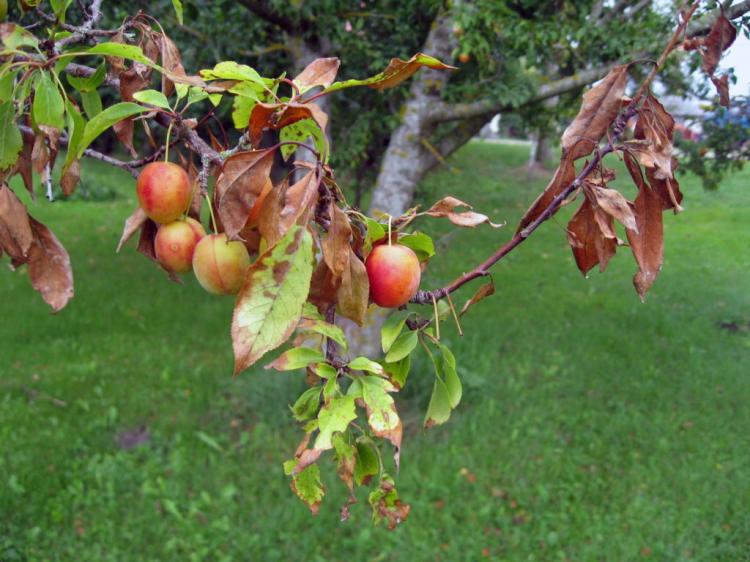
What can be done about fire blight?
- Infested plants cannot be treated
- Report the infestation: There is even an obligation to report this disease
- Trees are cleared, infested plants and cleared wood are completely burned
- This is how you can protect yourself: Selection of fire-resistant varieties
You might so like:
